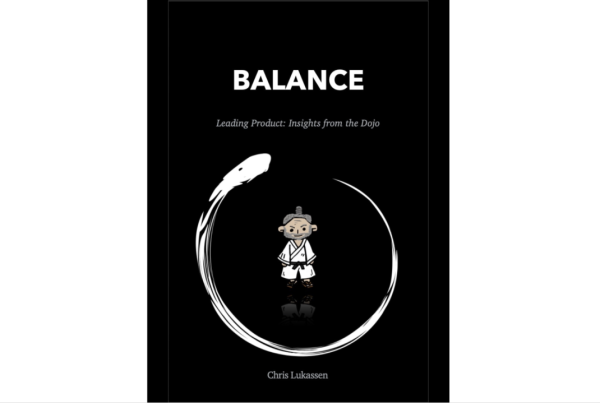Like all of you, I’ve been coming across more and more articles about how the world is about to change as a result of the pandemic. With titles like “Ten Ways Your Life Will Never Be the Same” or “Twenty Changes Coming to the Workplace”, such articles purport to enlighten us about the post-pandemic world that lies just beyond our doorstep. Journalists, pundits, business leaders and consultants of all stripes—everybody seems to be into scenario planning these days. But don’t worry, this is not one of those articles and I won’t be making any predictions.
Scenario planning, of course, is just a fancy term for something quite common. Whether in our personal or professional lives, we are constantly engaging in various kinds of planning—sometime consciously and deliberately, often not. Whether putting together a household budget or engaging in the annual strategic planning cycle at work; whether pursuing a romantic interest or trying to get to the airport in time for a flight, we create representations of the future in our minds to help us navigate various aspects of our lives.
Scenario planning is not a purely rational, technical exercise. Anyone who has lain in bed in the middle of the night, agitated by some imaginary calamity, knows how important emotions are in shaping the futures that we imagine. Biases too play a role and an imagined future often says more about the forecaster’s hopes and agenda than it does about his or her ability to forecast.
Scenario planning is about laying out possible futures and realities—possible worlds. Representations of the future can be more or less sophisticated, depending on the number of variables that go into them. They sometimes extend out only a few hours into the future but sometimes years, decades or even millennia. Some people make it their business to forecast all sorts of futures in all sorts of fields: economics, financial markets, geopolitics, sociology, technology and many more. For futurists, imagining tomorrows is the job.
Scenario planning is nothing new but something has certainly changed recently. The process itself, I think, is still the same as it was before the pandemic: data-intensive, numbers-driven, risk-based, “rational”, coldly scientific.
What has changed, from the standpoint of people who produce scenarios of all kinds, is that possibilities previously thought of as too unlikely or extreme to include in models have suddenly taken on an air of plausibility that makes it difficult to discard them off-hand (how many pre-pandemic models do you know of that seriously entertained the possibility of a universal basic income?). The range of potential outcomes, as a result, has suddenly expanded. What has also changed is that audiences of all kinds who consume such scenarios are suddenly willing to entertain a much broader set of assumptions and outcomes than previously (they don’t have to like any of it).
While I personally have no special talent for imagining alternate worlds and realities, I do find them absolutely fascinating. An avid reader, I love to learn about societies of all kinds that have preceded our own on this planet. Be it political institutions, family structures or belief systems; legal and economic systems or our relationship to nature, the human species has a rich and diverse history and it’s easy to forget that the way we live today is far from the only possible one. More often than not, examples from the past can be found in our most outlandish scenarios about the future.
I’ve learned of other worlds, on an intellectual level, through essays and documentaries but I’ve also experienced many others, in a much more intimate way, by going on extended journeys through those worlds in the company of characters of all kinds: the anguish of seeing the world shrink onto itself in the final days of the Roman Empire, the terror of living under totalitarian regimes past and present and the amazement of visiting strange civilizations of our distant future. Thomas Lombardo explains it this way:
“Science fiction expands one’s imagination by engaging in “possibility thinking.” […] Future scenarios involving technologies, ecologies, geologies, economies, societies, governments, habitations, psychologies, and ethical norms and values are described and pulled together into cognitively compelling, detailed worlds. […] Science fiction generates a holistic experience of the future, impacting all dimensions of human psychology. It combines the abstract and the personal – it is a universe of ideas and individual characters. It unites cognition and emotion.”
Rarely acknowledged as such beyond the confines of literature departments, high quality fiction of any kind is one of the most complex and powerful forms of scenario-building known to us because of the way in which it accounts for such a wide array of human variables.
So, what does the post-pandemic future have in store for us? I can imagine so many possibilities, but your guess is as good as mine. What I do know is that humans are notoriously unpredictable so accounting for the human condition is the acid test of any scenario-planning exercise worth its salt. For that reason, the highly technical and quantitative modeling of the kind favored by many corporations is likely to fall short again: people’s lives are rich narratives that simply can’t be reduced to little bits of data.
What is needed, in my view, is a return to a more balanced approach—one that makes room not only for technical, scientific and quantitative approaches, but also for everything that makes us uniquely human. We would gain greatly by making room, at the heart of running our businesses, for the enlightening powers of history, literature and the humanities more broadly.



